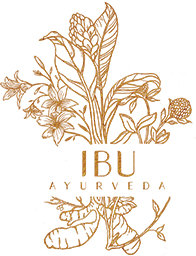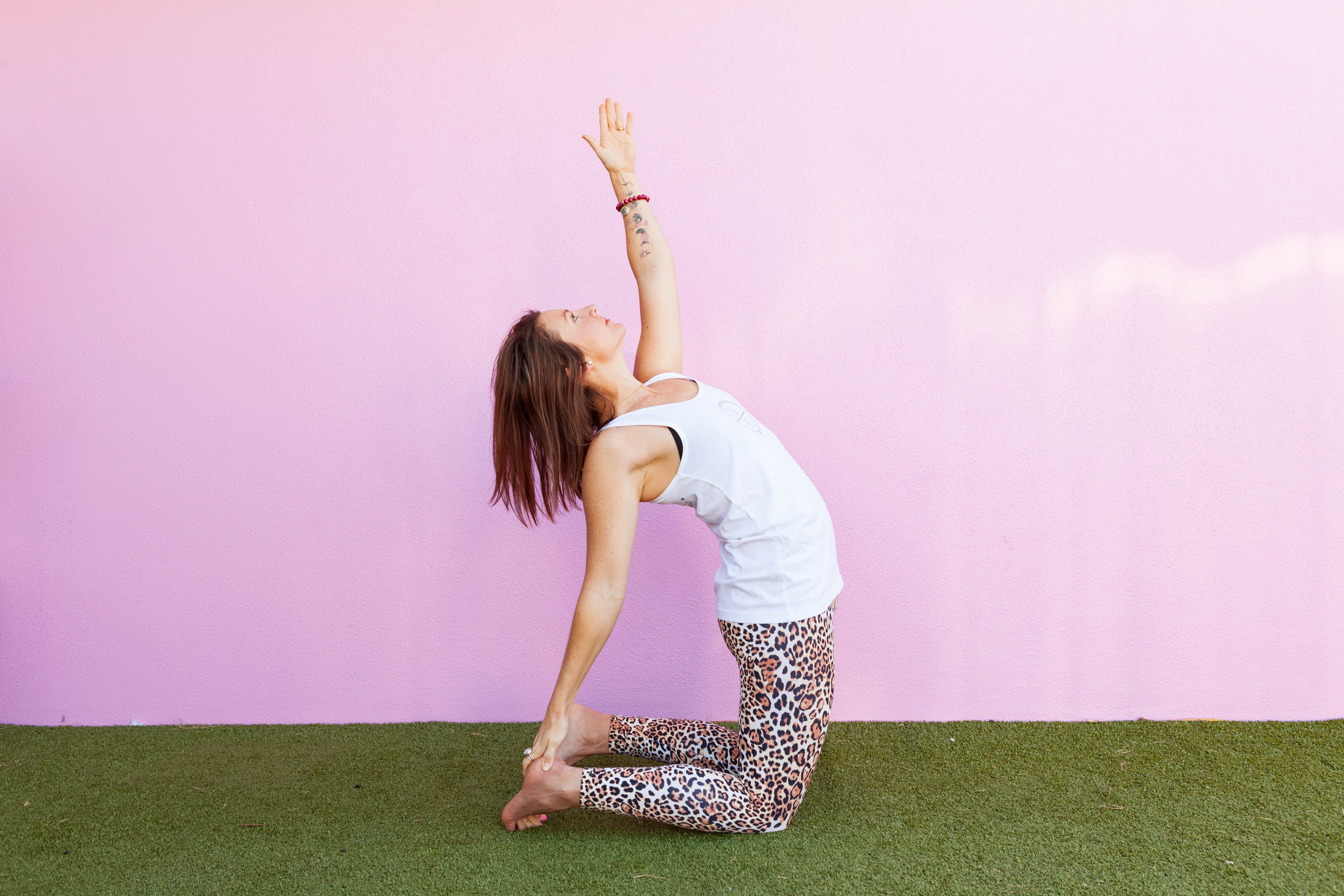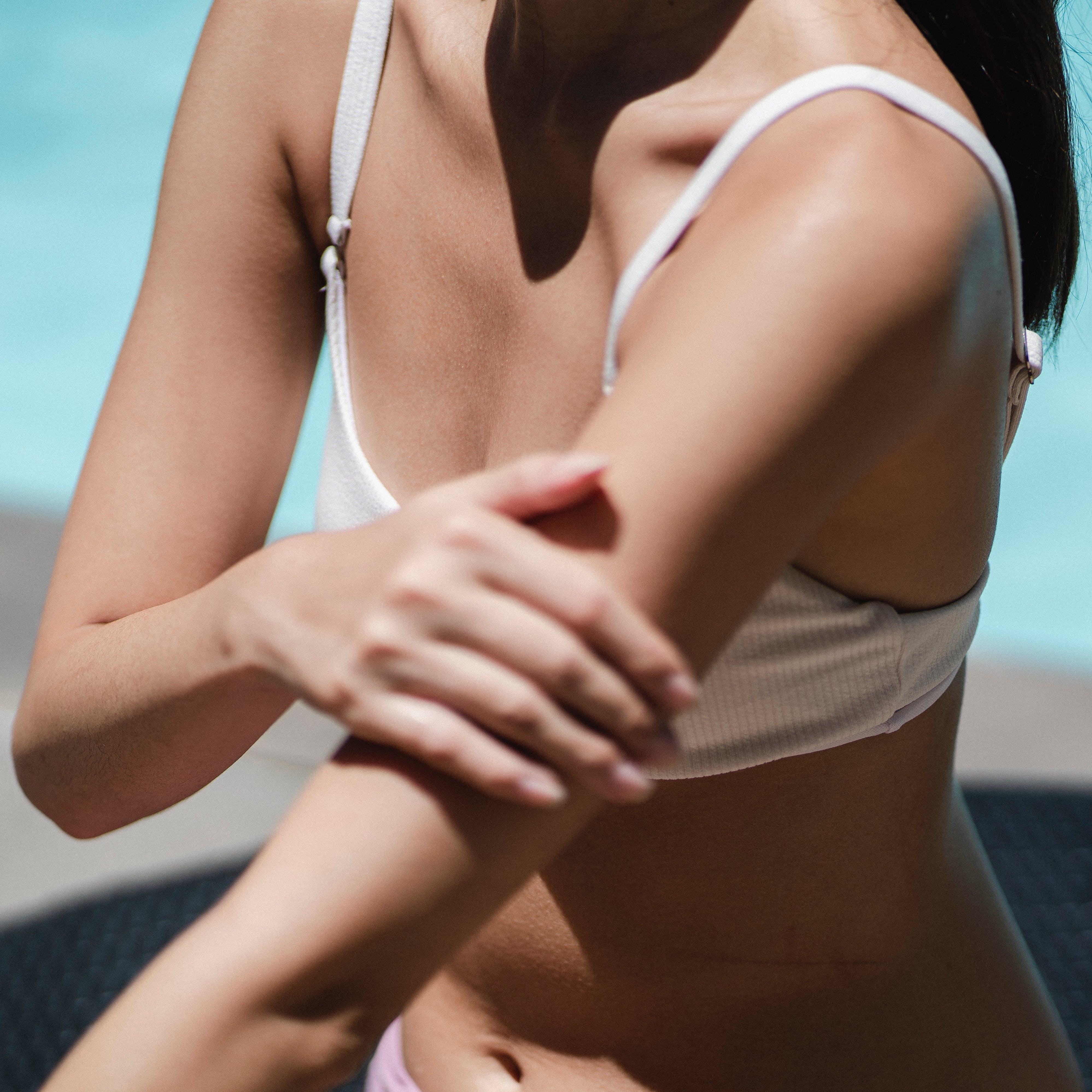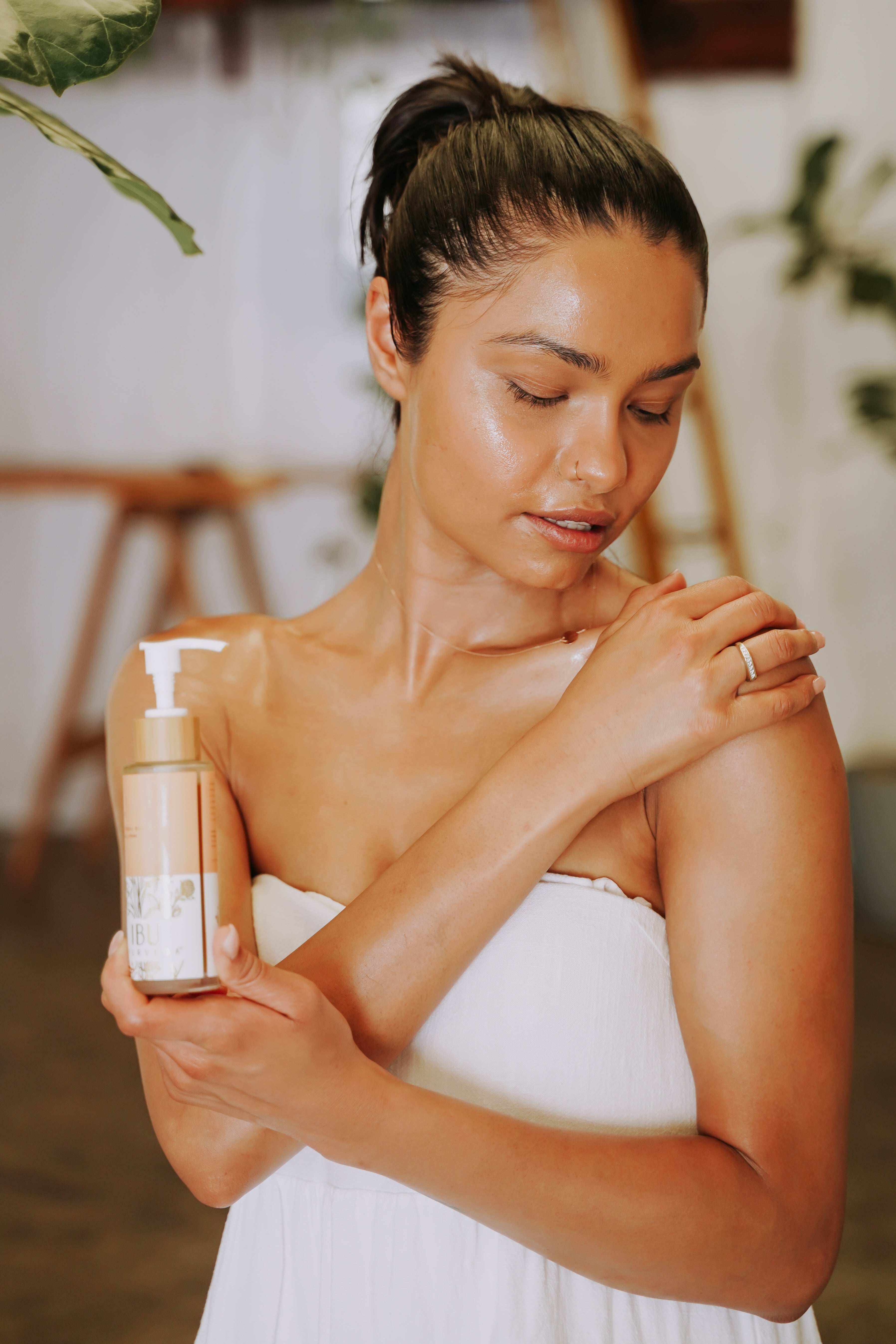Anna Young-Ferris (PhD) breaks down Vedic Meditation and shares how YOU can clear stress from your nervous system with the ultimate in self care.
Down to earth Anna Young-Ferris is a vedic meditation teacher who first found mediation when she was 18!
A mother, corporate executive, academic, student and teacher, Anna shares why mediation is the ultimate in self care and how you can transcend the chatter of the mind and cultivate more space!

Thank you sooooo much Anna for taking the time out of your busy schedule to chat with us, we are very grateful and overjoyed you could share so much vital information with us.
We are passionate about self care, and applying the principles of Ayurveda to daily life and all aspects of motherhood - hence we were so excited to hear that you are a Vedic meditation teacher who offers programs that help parents adjust to family life.
Can you tell us what a Vedic meditation teacher is, and whether Vedic meditation and Ayurveda are related at all?
A Vedic meditation teacher is a person qualified to initiate a student into the Vedic meditation tradition and personally instruct them about how to practice the technique. Vedic meditation is a mantra-based technique that originated from a lineage for teaching that is 6000 years old. The source of which is a beautiful system of philosophy and knowledge known as the Veda.
This is the same system of knowledge that Ayurveda comes from, as does Sanskrit and the physical asana yoga practice that we are familiar with in the West.
What led you on the path to becoming a Vedic meditation teacher?

For many years, decades even, I’ve worked and researched in the field of corporate climate change and sustainability; seeking to change business conduct to have a more positive impact on society and the environment.
I’d always sought to change the world by working from the external perspective but after many years of disillusionment with the state and scale of change I could actually affect, and as a long term meditator, I realised I needed to focus on changing individual consciousness.
My practise of Vedic meditation was the most profound in terms of benefit and personal shift (after experimenting with different styles of meditation), and one day I just knew I had to become a teacher.
What is Vedic meditation and why are thoughts welcome with this technique?

I have seriously tried many meditation techniques over the decades and also once held the misconception, like everyone, that meditation is about clearing the mind of thoughts. The issue is most meditation techniques have actually been designed for monks or nuns and the like that live in solitude with little to no possessions or distractions. When we transport these techniques to our busy modern ‘householder’ lives, it is easy to see why we feel like ‘failures’ and get frustrated because we can’t stop the thoughts.
That is, until I found the technique of Vedic meditation which has been perfectly honed for householders - like you and I - we live in the modern world, we have jobs, possessions and families etc. We gently repeat a personal mantra inside our mind to dive beyond thoughts;
As one of Anna's teachers explains, we learn that asking the mind to stop thinking is like asking the heart to stop beating (impossible!); and we accept that thoughts in meditation are perfectly fine and in fact of great benefit for stress release.
During the Vedic meditation course of personal instruction we learn about the mind-body connection and how everything that happens to us physically affects us mentally and vice versa.
We learn that when there are thoughts in meditation it is actually a sign that stress is being laundered out of our nervous system.
This can be accumulated stress - from superficial day-to-day situations to more significant stress situations, like a relationship break ups, buying/selling a house, illness and death etc - that have been layered into our nervous systems over the years. Each of us will have a different cellular imprint of stress that needs and can be released, so in fact the busier and more thought filled your meditation is the more stress is being released. So thoughts in Vedic meditation actually benefit us!
Given your professional experience with mindfulness, would you mind sharing if/how you applied mindfulness in your journey into motherhood, including if you practised mindfulness during child-birth and postpartum?
To briefly clarify, both meditation and mindfulness are widely used terms with multiple meanings. For me, mindfulness in its simplest understanding is the art of being present. Whilst meditation, and particularly Vedic meditation, is a mental technique to help us access greater presence (plus a whole lot more!).
I became a mum in my early twenties when I inherited a beautiful 3yo daughter from my husband, she is now 23yo. I have since birthed a now 6yo daughter and almost 2yo son.
Becoming a mum so early absolutely influenced my need to establish a regular meditation practice.
It has been vital to helping me call in present moment awareness and alerting me to when I’m in my doing/thinking mind reviewing the past and forecasting the future and not being present, especially with my children.
Childbirth is the most sacred experience a woman can experience and again my meditation practice opened me up to this and allowed me to have two incredible births, including a home birth. During pregnancy I listened daily to positive birthing affirmations from She-Births and Hypnobirthing and ‘filled up my tank’ with my usual meditation practice and continued this as much as I could when the new bubs’ arrived.
In Vedic meditation (which is optimally a twice daily practice of 20 mins), there is a wonderful thing called a ‘mother’s program’ which means as a mama you meditate for as much as you can whenever you can. It’s very relaxed in this regard.
I meditated a lot whilst breastfeeding (even for 5-10 mins) or whilst nursing bubby to sleep. The added bonus is it is a great way to induce an overtired bubs or child to sleep. Meditation is also an incredible antidote for mama fatigue.
In fact, Vedic meditation allows the body to rest 3-5x deeper than sleep, or to put it another way, it can provide 2-3 hours of the rest equivalent of sleep. I honestly do not know how I would have functioned without meditation when my baby boy was waking up 3-5x per night with gut health issues and I had to go to work every day.
Every mama needs some sort of self-care ritual to combat the sleeplessness that comes with children and for me meditation is fundamental.
What are your top three benefits of incorporating meditation into daily living?
Meditation can profoundly impact how you think and feel, and improve your relationships with yourself and others. It is wonderful now that science is verifying what the ancient yogis have known for thousands for years about the benefits of a regular meditation practice.

So I have just mentioned above the benefits in terms of fatigue. My other top three benefits would have to be the mental clarity that comes from a regular meditation practice. Because Vedic meditation is an industrial strength clean out of the accumulated stress in your nervous system, it allows the fogginess and busyness that occupies most modern minds to be cleared. That way you focus on what’s important and realise how much energy is wasted if you pay too much attention to the incessant monkey mind thinking.
Another top benefit is that meditation allows you to learn the art of what I call ‘the pause’; where you become more able to respond and adapt gracefully to the present moment rather than reacting in the same old predictable and perhaps less desirable ways.

You become far less concerned about things that once may have really bothered you. You start to notice and really appreciate the utter beauty in everything and everyone around you.
My final top benefit is you become more adept at living in a state of flow, being attuned to what is required of you to fulfil others and to be of service. Rather than forcing and applying effort, the practice teaches you how to surrender and let go of control which is something we are not familiar with in the West. You start to make decisions from your place of intuition/higher self rather than your place of monkey mind and small self neediness. It is a really beautiful way to live and be in the world.
Given the benefits, many people attempt mediation but often find themselves “too busy/tired”, would you mind letting us know your top tips for busy people and any opinions on falling asleep during meditation?!
We have all heard about the too busy syndrome.
Firstly, I’d like everyone to check their phone activity before claiming this as I’m sure some time for meditation in exchange for social media could be squeezed in.
A regular meditation practice is the ultimate self-care ritual for honouring your mental wellbeing. Most of us wouldn’t leave the house without showering and this is exactly why we shouldn’t leave the house without meditating.
We just need to reframe it as a ritual of self care rather than another thing to do.
But more than this, the issue is we are often searching outside of ourselves for our ‘happiness’, whether it be in the new home, the new job, the new outfit, the new kitchen, or the next holiday. This is all the realm of what I call the small self/ego – the internal dialogue or incessant chatter of your mind that too often is allowed to drive decisions. This is also the voice that says “I’ll meditate when I have more time” or “when everything falls into place”. At the same time, we neglect to realise there is a beautiful place of stillness, bliss and fulfilment right inside, ready to be accessed if we are willing and have the right meditation technique. This is the realm of soul and being; and once you start to access this place via meditation and live from this place as best you can, you find everything does fall into place.
Two 20 minute meditation sessions is the optimal Vedic meditation practice and may seem daunting but it is actually less than 3% of your day.
It seems like it subtracts but it actually adds even multiplies in terms of the benefits it gives in all the other areas of your life. Efficiency and definitely clarity, but also presence, problem solving, adaptability, gratitude, appreciation and compassion, are but a few of the benefits. I do understand the struggle to fit it in and I specialise in teaching Busy People and Busy Parents; I work closely with my students on how to keep up the regular twice daily practice. We do a weekly optional-no-judgment check-in via our private whatsapp group and they keep inspired by attending my group meditation meetings.
If you find that you’re falling asleep in meditation it probably means you have a lot of fatigue stress that is clearing out. We always recommend that new Vedic meditators allow lots of horizontal rest time when they first start practising as a way to combat the fatigue release.
Also, in Vedic meditation, the second meditation is never done right before bed as the practice is more about how you are when your eyes are open and in your interactions with others, rather than how you feel in the meditation itself.
The idea is that we meditate in the morning, then be in the world, then meditate again in the afternoon, to be in the world again.
Meditation can also wake us up, hence we do not recommend doing it too close to bed time.
We know you have three beautiful children, what does your daily self-care ritual look like?

My daily selfcare ritual definitely keeps expanding! And it’s good to remember that there is no such thing as a perfect practice. What I describe here is my optimal practice but every day is different especially with little people so going with the flow of life is key. Ideally I wake in the morning around 5am before the household and brush my teeth, scrape my tongue, then I’ll do some gentle asana (yoga postures), pranayama (breathwork), meditation practice, and rest.
I’ll drink hot water first thing in the morning and last thing at night plus during the day which works wonders for my digestion. I try to eat only high vibrational plant based food. Breakfast includes a jampacked full of goodness daily green smoothie and my homemade coco-nutty granola inspired by a Sarah Wilson recipe topped with coyo and organic berries. Amongst motherhood, working full time and running a small business I only get to practise yoga asana at my local studio twice per week. It’s a joy and self-care ritual I relish.

My afternoon meditation is from my home office or on the bus home from my city office. The great thing about Vedic meditation is noise is no barrier so you can practise anywhere you can close your eyes – seriously! This works well on the weekends as sometimes I meditate in the afternoon whilst cuddling one of my kids and they’re watching television or even in the car whilst hubby is driving and we are on our way to or from somewhere.
My bedtime ritual includes 5 mins of gratitude journaling plus manifestation journaling on the new moon and full moon. This is something I have only begun in earnest this year and I absolutely love it. I also do a mini abhyanga (self massage) where I use a vata pacifying oil and massage my forehead, temples, palms of my hands and soles of my feet, literally telling my nervous system that it is time to sleep.
Then I’ll read something inspiring though by this stage I’m getting pretty tired. I have never been great at sleeping so this ritual has been really important in repairing sleep, as has ensuring I switch off all devices for at least an hour before I go to bed.
Do you have some favourite books on meditation or Ayurveda you could share with us?
Wow so many inspiring meditation books to recommend. For modern spirituality, definitely “The Untethered Soul” and “The Surrender Experiment” by Michael A. Singer, plus anything by Ram Dass and Maharishi Mahesh Yogi. For more classic spirituality, the Upanishads and the Bhagavad Gita and “Siddhartha” by Herman Hess.
For Ayurveda specifically, I love “Perfect Health” by Deepak Chopra and “The Path of Practice” by Bri. Maya Tiwari. In fact, I have a link to my favourite books to keep my students inspired here.
If you could give our followers just one piece of game changing advice what would it be?
Commit to a regular (twice daily) meditation practice and make it a non-negotiable – this is all about prioritising your self care so you can be the most amazing version of yourself for your loved ones and everyone you interact with!
And I absolutely recommend finding a dedicated meditation teacher to guide and support your practice.
Thank you so much for inspirational sharings Anna, before we all head off to sit on our mediation cushions and reap all of these benefits you have described, what’s next for you?
Personally, I am currently undergoing some advanced meditation training which is a supremely beautiful year long course with some amazing humans. I am also exploring ways to study the effects and benefits of meditation as part of my academic research program and I am utterly enjoying growing my community of meditation students.
Anna teaches Vedic meditation regularly from her gorgeous meditation studio set amongst the rainforest by the Pittwater in Newport, at KAI YOGA, Mosman and other locations around the world. Follow her on Instagram @annayoungferris or head to www.annayoungferris.com.






Comments